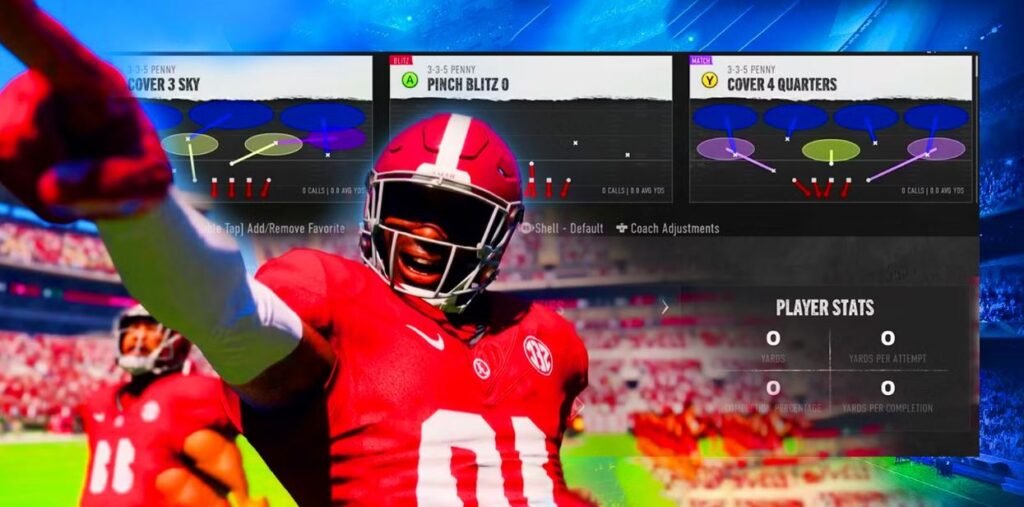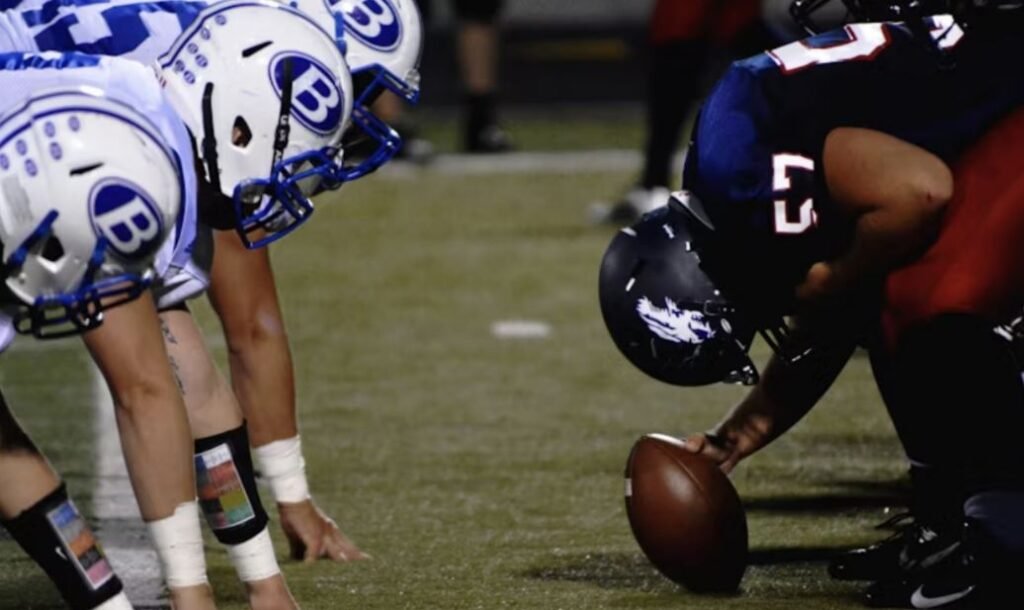In football, each team fields a specific number of players at a time, depending on the level and type of play. How many football players are on the field? While the most common format is 11 players per team, different versions of football, including high school, college, NFL, and Canadian football, may vary slightly in terms of player count. This article will provide an overview of the number of players on the field in various types of football, describe the positions, and explain how player counts impact game strategy.
The Standard Number of Players in American Football
In traditional American football—played at the high school, college, and professional (NFL) levels—each team has 11 players on the field at any given time. This makes a total of 22 players on the field, with 11 on offense and 11 on defense.
The 11-player format is designed to balance offense and defense, allowing for specialized roles that enable a variety of strategies and tactics. Here’s a breakdown of these roles and how they contribute to the game:
Offensive Positions (11 Players)
The offense has 11 players, including:
- Quarterback (QB): The leader of the offense who calls plays and either throws, hands off, or occasionally runs the ball.
- Running Back (RB): Also called the tailback or halfback, this player takes handoffs from the quarterback to run the ball.
- Fullback (FB): A blocking back who provides support for the running back and also takes handoffs or catches short passes.
- Wide Receivers (WR): Typically two to three players who line up on the outside and catch passes from the quarterback.
- Tight End (TE): A hybrid position that blocks and catches passes, lining up close to the offensive line.
- Offensive Linemen (OL): Five players who protect the quarterback and open lanes for the running back. This group includes the center (C), two guards (LG and RG), and two tackles (LT and RT).
Defensive Positions (11 Players)
The defense also fields 11 players, with a variety of roles depending on the formation:
- Defensive Linemen (DL): Three or four players who rush the quarterback and stop the run. This includes defensive tackles (DT) and defensive ends (DE).
- Linebackers (LB): Middle linebackers (MLB) and outside linebackers (OLB) play in the second tier of the defense, tackling runners and covering receivers.
- Cornerbacks (CB): Two players who cover wide receivers, defending against passes and occasionally blitzing.
- Safeties (S): Free safeties (FS) and strong safeties (SS) who play deep coverage, support cornerbacks, and help prevent big plays.
Special Teams
When the special teams unit is on the field, there are still 11 players per side. Special teams appear during punts, kickoffs, and field goals, with specialized roles such as the kicker, punter, long snapper, returners, and blockers. Each special teams play involves both offensive and defensive players who focus on scoring, blocking, or tackling in these specific situations.
Variations in Player Count Across Different Formats of Football
While American football typically fields 11 players per side, other versions of football have different rules regarding player count:
Canadian Football
Canadian football is similar to American football but features 12 players per team on the field. This makes a total of 24 players in play. The extra player in Canadian football adds a unique dimension to gameplay, as the field is larger (110 yards long and 65 yards wide), and the game emphasizes passing.
In Canadian football, offensive formations include an extra receiver or running back, and defenses add an additional linebacker or defensive back. This adjustment allows for more dynamic plays and offers teams additional flexibility.
Arena Football
Arena football is a modified version of American football played indoors on a smaller field. In arena football, teams have 8 players on the field per side, with 16 total players in play. The smaller team size suits the condensed field dimensions, which measure 50 yards long and approximately 28 yards wide.
Due to the smaller field and team size, arena football emphasizes quick plays and high scoring, with fewer players allowing for faster gameplay. Arena teams typically include only two offensive linemen, one running back, three receivers, and a quarterback, with a similarly compact defensive setup.
Flag Football and Other Recreational Formats
In flag football and other recreational or youth leagues, team size varies depending on the league rules and field size. Common formats include 5-on-5, 7-on-7, or 9-on-9. These adaptations are designed for casual play, smaller spaces, and a simplified version of the traditional game.
For example:
- 5-on-5 Flag Football: Often played on a smaller field with no offensive or defensive lines, focusing on passing and agility.
- 7-on-7: Common in passing leagues and youth tournaments, this format emphasizes skill positions like quarterback, receiver, and defensive backs, with no linemen or blocking.
Impact of Player Count on Strategy
The number of players on the field affects team strategy, formations, and play-calling. Here’s how player count influences each version of football:
American Football (11-Player Format)
With 11 players, American football emphasizes a balance of offensive and defensive positions, allowing for specialized roles. This setup supports complex formations, such as the 4-3 or 3-4 on defense and a variety of offensive schemes, such as the spread, I-formation, or single-back. The player count enables teams to deploy versatile strategies, such as blitz packages on defense and play-action passes on offense.
Canadian Football (12-Player Format)
The additional player in Canadian football allows teams to adjust their formations and create more passing options. Offenses benefit from an extra receiver, and defenses can deploy more flexible coverages or blitzes. Canadian football’s rules also include a larger field, further emphasizing the use of space, player motion, and quick offensive plays.
Arena Football (8-Player Format)
Arena football’s 8-player format speeds up the game and leads to high-scoring matches. With fewer players, teams focus on quick passes, fast-paced offense, and man-to-man coverage. The compact field and limited player count require a more direct style of play, with fewer blocking schemes and an emphasis on athleticism and scoring.
Flag Football (Varied Formats)
In flag football, fewer players on the field make the game faster and more reliant on individual skill. With formats like 5-on-5 or 7-on-7, flag football reduces physical contact, eliminating the need for offensive and defensive linemen. This places a premium on agility, speed, and passing accuracy, as well as positioning and teamwork.
FAQs
How many players are on a football field at once?
In American football, each team fields 11 players at a time, for a total of 22 players on the field. Canadian football uses 12 players per side, totaling 24 players. Arena football has 8 players per side, totaling 16 players, and flag football varies depending on the league format, commonly featuring 5 to 9 players per side.
What happens if a team has too many players on the field?
If a team has too many players on the field at once, they receive a penalty for illegal substitution or too many men on the field. In American football, this results in a 5-yard penalty. Officials typically stop the play and assess the penalty before the next snap.
How many players are on the field during special teams plays?
During special teams plays (such as kickoffs, punts, and field goals), the standard number of players remains the same as in regular play: 11 players per team in American football and 12 players per team in Canadian football. These units include specialized positions like the kicker, punter, returner, and blockers.
Are there different player counts in youth or junior football?
Yes, youth and junior football leagues often adapt player counts to suit their resources, field sizes, and developmental goals. Common adaptations include 8-on-8 or 9-on-9 formats, especially for younger age groups, which simplify the game and allow for more hands-on coaching and player engagement.
How many players are on the offense and defense in football?
In American football, the offense and defense each field 11 players. The offense includes positions such as quarterback, running backs, receivers, tight ends, and offensive linemen, while the defense includes linemen, linebackers, cornerbacks, and safeties. Arena and flag football formats use fewer players per team, with adjusted positions.
Can a team play with fewer players on the field?
Yes, a team can technically play with fewer players on the field, but this is usually unintentional and is typically avoided. Playing with fewer players puts the team at a disadvantage, as they are missing a player who could block, cover, or contribute to the play. Teams will sometimes take a timeout to ensure the proper number of players are on the field.
Conclusion
In conclusion, the number of football players on the field varies depending on the format and level of play. Standard American football has 11 players per team, while Canadian football uses 12 players per team, and arena football operates with 8 players per team. Each format affects the strategy, player roles, and game pace, creating unique dynamics within the sport. Whether you’re watching a high school game, college game, or a fast-paced arena match, understanding the player count and its impact on gameplay can enhance your appreciation for the strategic elements of football.




